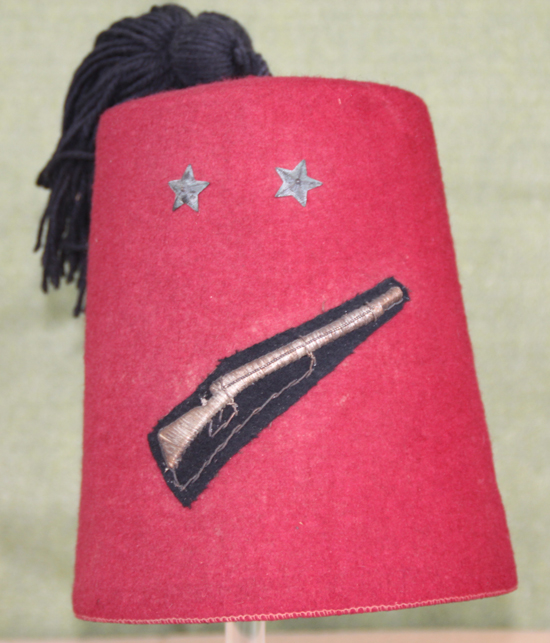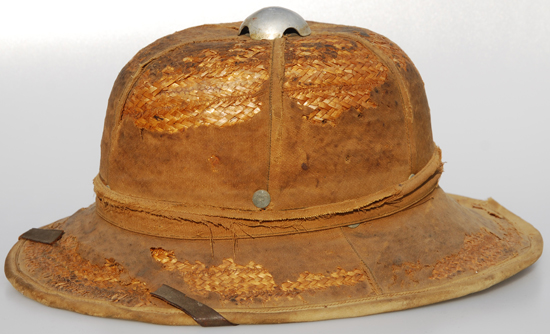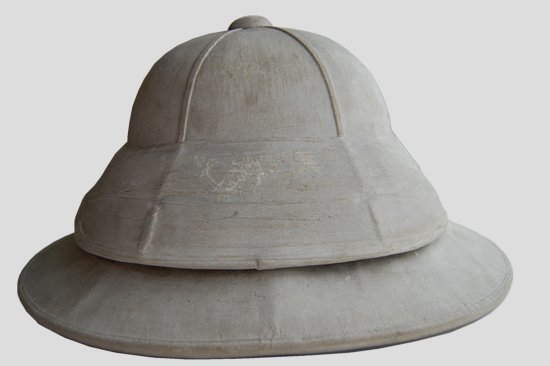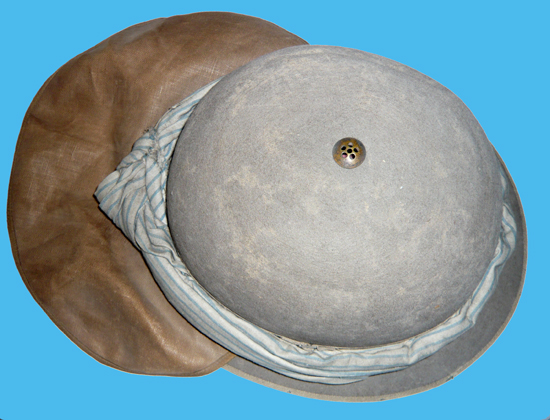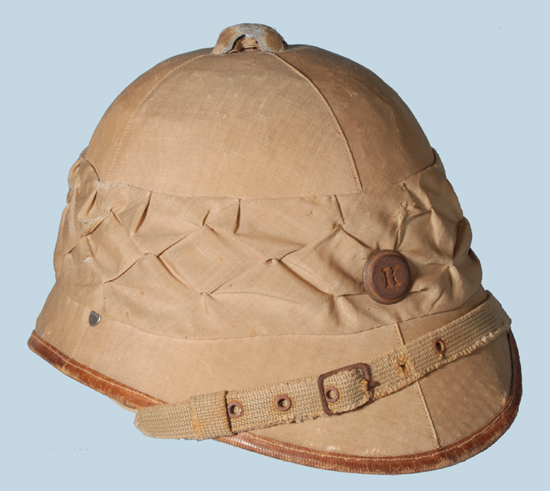In 1899, London hat maker Walter Barnard of Jermyn Street, St. James’s, patented a fashionable helmet with a metal grill between sweatband and hat to allow ventilation. Here is an example of this helmet and later a variation whose ventilation strip was produced in rubber. Continue reading
The Italian Tropical Tarbusc
The “tarbusc,” from the Persian Sarpush (headdress) is a hat similar to fez, a truncated cone shape, and was typical of the indigenous Italian troops in Eritrea and later AOI (Italian East Africa).
It was “inherited” by Egyptian troops stationed at Massawa, at the time of the first Italian occupation in 1885. The original version of the headdress was used by the irregular soldier of the Ottoman army, the Bashi Bazuk (“Mad Heads”) and was red with a black bow. Continue reading
Straw and Wicker Helmets
This was the standard pattern used by the Afrika Korp. While most of these were made of cork, there are many examples that were apparently made of weaved straw with wicker support. This example, while in bad condition offers an excellent look at the “inside” of the helmet
While sola pith and cork are among the most commonly used materials in the construction of sun helmets, straw weave and wicker were used at times as an ersatz material, especially in wartime. We previously noted two examples of British-made Wolseley straw helmets in the collection of Stuart Bates. While these are the only two known surviving examples of British straw helmets of this pattern, there are many surviving examples of straw helmets from other countries.
How many of these helmets were produced remains a mystery, but surviving examples given an indication that serious craftsmanship went into their construction. Continue reading
The Rodel Helmet of Thomas Townend & Co. – A Surprising Construction
Helmet Flashes in the British Army
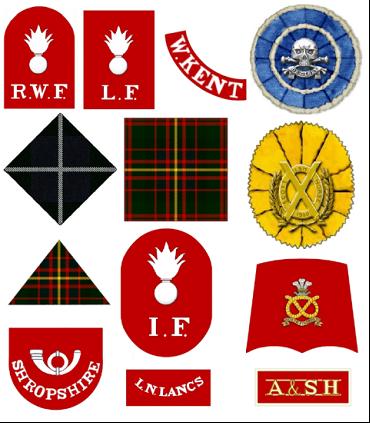
Some of the weird and wonderful shapes of helmet flashes often encountered on Foreign Service Helmets and Slouch Hats.
The British army has long used khaki coloured uniforms for its troops. This goes as far back as the Indian Mutiny and possibly before with some regiments of the East India Company’s army. The introduction and use of khaki into the British army is generally attributed to an army officer named W.S.R. Hodson, who later founded the irregular light cavalry, Hodson’s Horse. Continue reading
Ellwood´s Alteration to their own Air Chamber Helmet Patent.
Stuart Bates’ article on “Ellwood’s Air Chamber Helmet” from July 5th 2012 describes Ellwood´s patent for a hat suitable for tropical regions. Whatever the shape – the idea is always executed in the same way. There are two shells that do not meet and form an “air chamber” – ventilated by holes or not – where the air is used as isolation against heat. Theoretically, a fine idea – but, as Stuart notes correctly: “There is no provision for the escape of heat, emanating from the wearer’s head, out of the inner shell which must have lessened the overall effectiveness of the design.” Ellwood´s must have had the same thought and here is an example of an Ellwood helmet where their own patent is altered. Continue reading
Austrian Sun Helmets – The Empire That Didn’t Look For a Place in the Sun
As we noted previously in regards to the Czech sun helmets, it might seem apposite to consider that a landlocked nation in Central Europe would have need for a sun helmet. But while the Czechs were a unique case, one must remember that the Austria of today is much different from the Austro-Hungarian Empire of the late 19th and early 20th century. Continue reading


